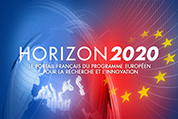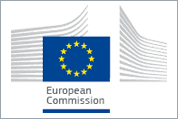FINAL EXHIBITION
A final exhibition related to WAVES research and meant for the general public will be held at focusTerra (Earth Sciences Museum) at ETH Zurich.
It will open in the summer of 2020 and is scheduled to run for 1,5 years.
Do not hesitate to have a look on the website of the institution: http://www.focusterra.ethz.ch/en/
General idea
This innovative museum exhibition aims at increasing the accessibility to wave phenomena and science by presenting key ideas simply and clearly through interactive exhibits and hands-on activities based on the cutting-edge scientific investigations and results obtained at ETH Zurich and within the WAVES network.
In fact, within this network, new research on innovative applications of wave physics in acoustics, medical imaging, seismology and resource exploration has been performed. This special exhibition will thus complement the demonstrations already present at focusTerra to give a broader overview and understanding of wave phenomena, their impacts and their applications.
The exhibition will be structured around different scales, considering not only the full spectrum of wavelengths but also different spatial scales – Universe, Earth and planets, humans/animals and materials – in which waves occur and can be used.
In addition, it will also reflect the process of “rescaling”, which is frequently used by scientists to mimic reality in (computer) models and laboratory experiments. The goal is to show and discuss the increasing and partly vital relevance of technology relying on waves.
The role of Waves and Waves ESR
In addition of the research on rescaling processes that will be included (i.e., the various ESR working on immersive experimentation and the Wavelab), the interdisciplinary nature of the research conducted in the WAVES ITN fits naturally with the different spatial scales and general themes that will be considered.
On the one hand, because it spans a large range of media and wavelengths – one ESR researches ocean-air coupling for infrasound waves (wavelengths of 10s-100s of km), another super-shear imaging of waves in soft tissue (wavelengths of 10s of mm).
On the other hand, because the societal and technological impact of the research vary broadly. WAVES research on seismic interferometry, a development that revolutionized seismology by decoupling, e.g., the crustal imaging from the distribution of real earthquake sources by turning noise into signal, can easily be included as interferometry will be covered. Similarly, WAVES research on Marchenko focusing can be included along with topics related to time-reversal, as they represent major breakthroughs in wave propagation originating from the domain covered by the WAVES network, if not the network itself.
Key Facts
- Coordinated by Université Pierre et Marie Curie
- 15 participating partners
- 6 European countries and the USA
- 15 trained fellows
- Project budget: 3 227 952.96€
- Project duration: 4 years
- WAVES is a European project funded by the European Union’s Horizon 2020 research and innovation programme under the Marie Slodowska-Curie grant agreement n° 641943.
Contact
Coordinator:
Lapo Boschi (lapo.boschi @ upmc.fr)
Project Manager
Fanny Schultz (fanny.schultz @ sorbonne-universite.fr)



